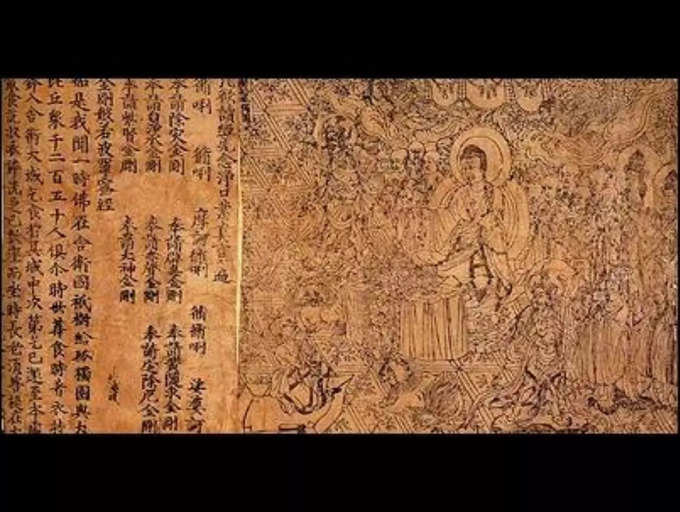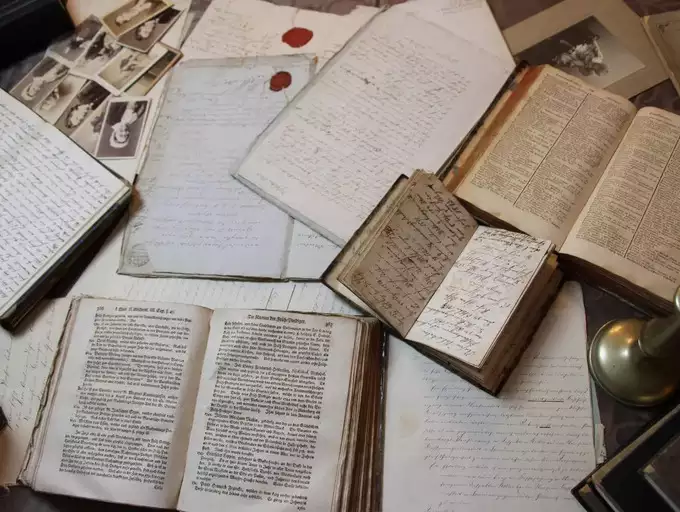Lifestyle
7 interesting facts about World’s oldest book

If somebody asks a group of people the name of the oldest book in the world, the majority answers will point to the Gutenberg Bible.
But, it is not the Bible but rather a Buddhist text that owns the feather to the cap of being the World’s oldest book.
The Diamond Sutra, also known as the ‘Diamond Cutter Sutra’ or ‘Vajracchedika Prajnaparamita Sutra,’ is a remarkable Buddhist text and is considered the world’s oldest printed book.
It holds immense historical, religious, and cultural significance. It is also in the words of the British Library, “the earliest dated printed book.”
Here are seven fascinating facts about this ancient manuscript.
1. Origin

The Diamond Sutra, an ancient Buddhist text originally written in Sanskrit was discovered in 1900 within “The Cave of a Thousand Buddhas,” a hidden library nestled in Dunhuang, China. In 1907, a British-Hungarian archaeologist named Marc Aurel Stein was conducting an expedition to map the ancient Silk Road when he learned about the concealed library and through a bribe managed to get his hands on thousands of documents, including the revered Diamond Sutra.
2. Important in the Mahayana tradition

The Diamond Sutra holds a pivotal role in Mahayana Buddhism, a prominent tradition within the Buddhist faith. It is categorized under the ‘Prajnaparamita’ genre, focusing on the attainment of wisdom (prajna). This wisdom is similar to a “diamond” that can penetrate illusions, allowing one to perceive the genuine essence of reality. Within the Sutra, dialogues unfold between the Buddha and Subhuti, his devoted disciple, delving into foundational Buddhist doctrines like emptiness and nirvana.
3. Format and printing

The Diamond Sutra is not a conventional book, but rather a scroll. It is approximately 5 meters (16 feet) long and the text is printed using a woodblock printing technique, where each page was carved into a wooden block. These blocks were then inked and pressed onto a sheet of paper or fabric. The Diamond Sutra is a prime example of ancient printing technology, showcasing the historical advancements in book production during the Tang Dynasty.
4. The content inside

The Diamond Sutra, a concise text comprising about 6,000 words, is one among numerous sacred texts, often referred to as “sutras,” within Mahayana Buddhism. A significant number of practitioners within this tradition hold the belief that the Mahayana Sutras were directly communicated by the Buddha. The structure of The Diamond Sutra mirrors a dialogue between the Buddha’s disciple, Subhuti, and the Buddha himself, portraying a profound exchange of wisdom and insights.
5. Free for distribution

Within the sutra, an inscription on the lower right hand side reads, “reverently made for universal free distribution by Wang Chieh on behalf of his parents on the fifteenth of the fourth moon of the ninth year of Xian Long.” The mark of Universal free distribution aligns with one of the core buddhist philosophies of spreading wisdom and the word of Buddha far and beyond. When the teachings of Buddha are propagated, it is considered as a good deed.
6. The essence of a Diamond Cutter

In the Diamond Sutra, the term “diamond” symbolizes the sharp and enlightening nature of wisdom. Just like a diamond can easily cut through various materials, wisdom can slice through ignorance and illusions, guiding individuals towards enlightenment. Essentially, the Diamond Sutra conveys the idea that wisdom, akin to a diamond, empowers practitioners to perceive the genuine essence of reality and free themselves from suffering.
7. Preservation efforts

The Diamond Sutra’s significance transcends geographical and cultural boundaries. In 2013, the British Library successfully concluded a decade-long initiative focused on preserving the world’s oldest dated printed book. Created by the International Dunhuang Project at the British Library, a short film was produced to narrate the journey of this ancient sutra scroll, encompassing its historical significance, scientific aspects, and the meticulous conservation efforts undertaken.






